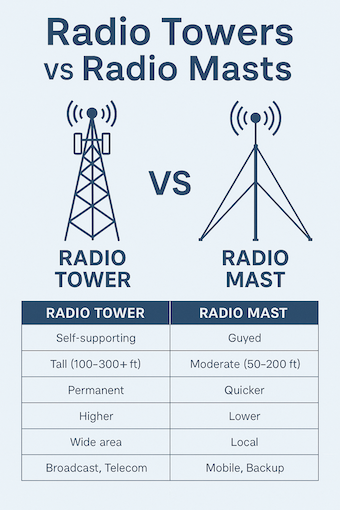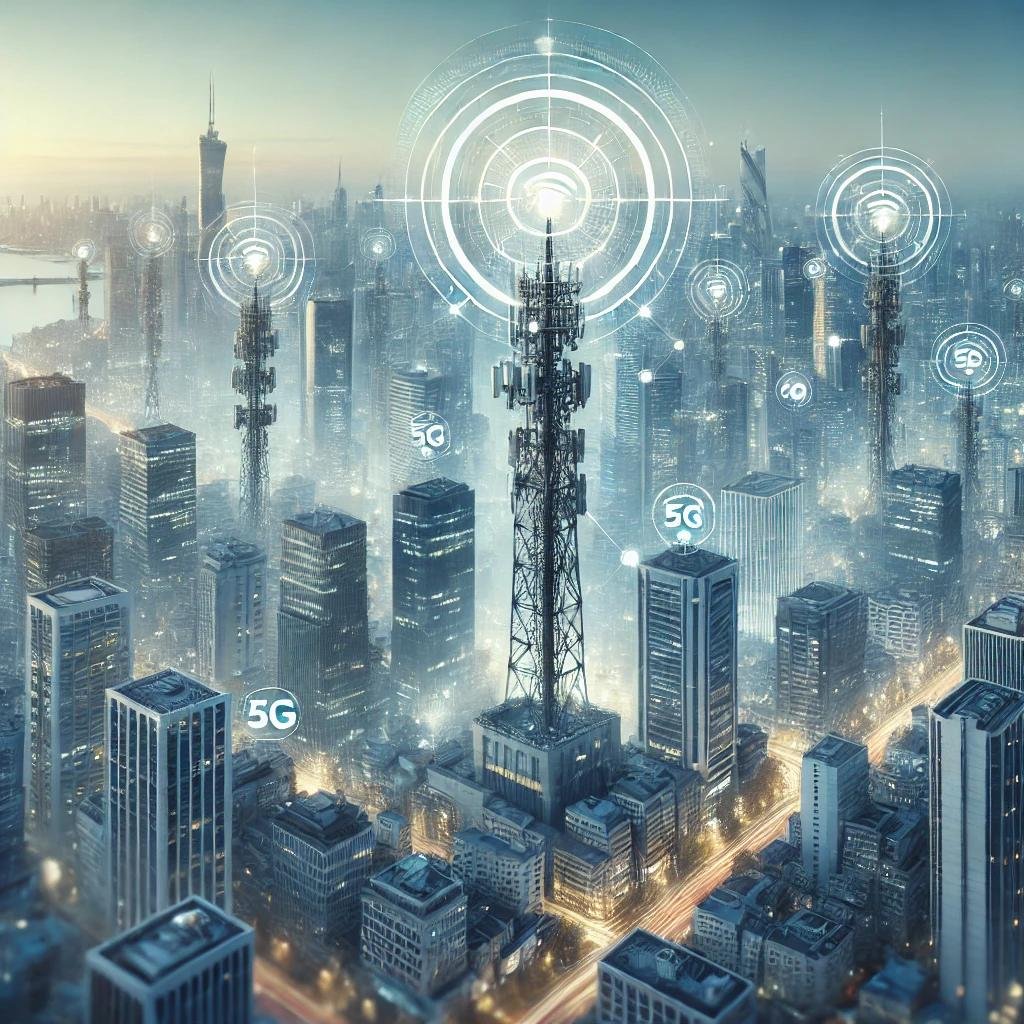Radio Towers vs Radio Masts: Which Is Essential for Coverage?
Introduction: Why Coverage Infrastructure Matters
In a hyper-connected world, uninterrupted communication is no longer a luxury—it’s a necessity. From FM radio broadcasts to GSM and mobile data networks, signal towers form the critical backbone of connectivity. Two of the most widely used structures are radio towers and radio masts. While they may look similar, these structures serve distinct roles in ensuring consistent coverage and signal quality.
Understanding their differences can help network planners, telecom companies, and even local governments make informed infrastructure investments. According to the International Telecommunication Union (ITU), optimized coverage design can reduce operational costs by up to 25% while improving network reliability.
What Are Radio Towers?
Radio towers are tall, free-standing structures designed to support antennas and transmitters for FM, GSM, and other communication systems. Constructed from lattice steel, concrete, or monopole designs, radio towers are built for stability, height, and long-term operation.
Key Characteristics:
- Height: Typically range from 50 to 300 meters, enabling wider coverage.
- Capacity: Can support multiple radio antenna towers, GSM equipment, and microwave links.
- Durability: Engineered to withstand extreme weather conditions, including high winds and ice loads.
- Applications: FM radio, television broadcasting, mobile network towers, and high-capacity telecom systems.
Height is a major factor in extending signal reach. As per Ofcom’s broadcasting guidelines, increasing tower elevation by just 10 meters can improve coverage by up to 15% in rural areas.
What Are Radio Masts?
A radio mast is typically a guyed (cable-supported) structure that is lighter, cheaper, and quicker to erect than a full tower. They’re ideal for temporary or semi-permanent installations where flexibility and cost-efficiency are priorities.
Advantages:
- Low-cost installation: Requires less material and simpler foundations.
- Portability: Easily deployed for temporary GSM coverage or disaster recovery operations.
- Smaller footprint: Suited for locations where full towers are impractical.
Common Use Cases:
- Emergency GSM networks in disaster zones.
- Regional FM transmission for remote communities.
- Temporary coverage for large events or festivals.
vs. Radio Masts: Key Differences
| Feature | Radio Towers | Radio Masts |
|---|---|---|
| Structure | Self-supporting, lattice/concrete | Guyed, supported by steel cables |
| Height | 50–300+ meters | 30–150 meters |
| Installation | Permanent, complex foundations | Faster, cost-effective setup |
| Durability | Long-lasting, low maintenance | Higher maintenance, less robust |
| Coverage | Wide-area, reliable transmission | Moderate, ideal for local coverage |
| Applications | FM, GSM, telecom, broadcasting | Emergency GSM, regional FM, rapid deployment |
Which Is Essential for Coverage?
The choice between radio towers and radio masts depends on coverage needs, site conditions, and budget:
- Radio towers: Backbone of permanent, high-capacity networks. Reliable long-range coverage for FM and GSM systems.
- Radio masts: Affordable and flexible for temporary or rapidly deployable networks.
In practice, many network operators use a hybrid approach, combining towers for primary coverage with masts for spot or emergency coverage, ensuring optimal network resilience.
The Role of FM, GSM, and Telecom Towers
Modern FM towers deliver high-quality audio broadcasts, while GSM towers enable mobile voice and data services. Today’s telecom towers are often multi-tenant structures, hosting equipment from multiple carriers to maximize efficiency. According to GSMA Intelligence, shared tower infrastructure can cut deployment costs by up to 40%, enabling broader coverage in underserved areas.
Future Trends in Radio Coverage
- 5G Integration: Existing towers are being upgraded to support 5G and future network technologies.
- Eco-Friendly Designs: Lightweight materials and solar-powered installations reduce carbon footprints.
- Digital Twins: Ericsson Research reports that virtual tower modeling improves design accuracy and reduces deployment errors.
- Flexible Deployments: Portable GSM towers are increasingly used for events, emergencies, and rapid network expansion.
Choosing the Right Structure: Practical Tips
- Assess coverage area: Use coverage mapping tools to determine required tower height and density.
- Plan for future growth: Opt for structures that support 5G upgrades and multi-band antennas.
- Budget realistically: Factor in maintenance, land leasing, and energy costs.
- Work with certified contractors: Ensure compliance with telecom safety regulations.
Frequently Asked Questions (FAQ)
Q1: What is the main difference between a radio tower and a radio mast?
A: A radio tower is a self-supporting permanent structure, while a radio mast is a guyed and typically temporary or lightweight structure.
Q2: Are radio masts less reliable than towers?
A: Masts are less robust and require more maintenance but are effective for temporary or local coverage needs.
Q3: How tall do radio towers need to be for GSM coverage?
A: Typically 50–150 meters, depending on terrain and population density.
Q4: Can radio towers support multiple carriers?
A: Yes, modern telecom towers often support multiple networks, improving coverage and reducing costs.
Q5: Are there environmental concerns with tower installations?
A: Many operators are switching to eco-friendly designs, including renewable-powered signal towers.
Conclusion: Balancing Performance and Flexibility
Both radio towers and radio masts play critical roles in global communication infrastructure. For high-capacity, permanent coverage, radio towers are indispensable. Meanwhile, radio masts offer adaptability and rapid deployment in dynamic or remote environments.
By understanding the strengths of each, network planners can create resilient systems that deliver reliable coverage while optimizing costs and resources.


